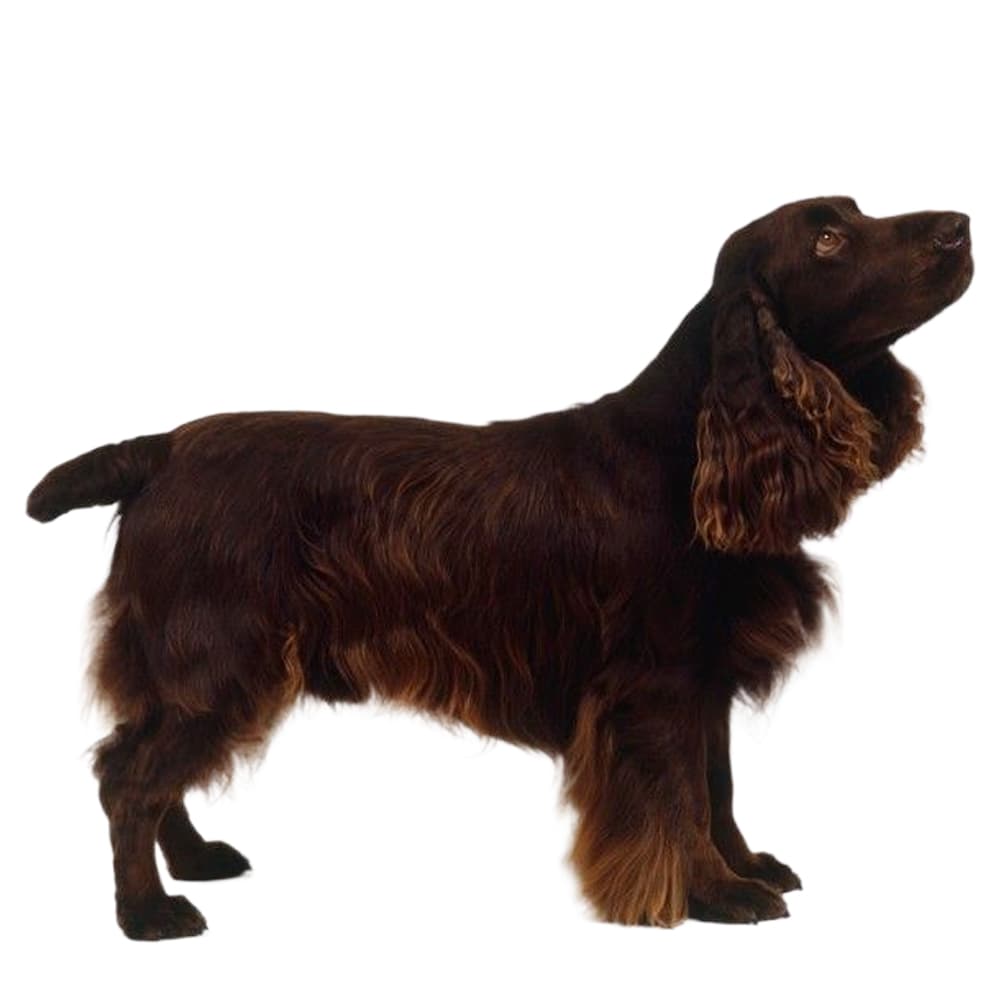Discover your dog's connection to this breed and 200+ others



Discover your dog's connection to this breed and 200+ others


The Field Spaniel is a versatile, medium-sized breed known for its proficient hunting skills, mild temperament, and enduring companionship. As a member of the Spaniel family, the breed has a long history extending back several centuries. The Field Spaniel was initially bred in England during the late 19th century. They were created by crossbreeding Sussex Spaniels and Cocker Spaniels, with the goal of developing a dog that could work both on land and in water. The Field Spaniel's popularity experienced a significant downturn during the early 20th century, but dedicated breeders undertook efforts to revive the breed. Today, while not the most common breed, Field Spaniels are cherished for their versatile abilities and endearing personalities.
Field Spaniels can suffer from cataracts, heart murmurs, hip dysplasia, hypothyroidism, otitis externa, patellar luxation, progressive retinal atrophy, progressive retinal atrophy (cord1 or crd4), retinal dysplasia, seizures, and subaortic stenosis. Genetic testing is recommended, including for the following additional conditions: hyperuricosoria, degenerative myelopathy, and progressive rod-cone degeneration.
Field Spaniels are known for their mild, adaptable, and docile temperament. They are generally good with children and get along well with other dogs. These dogs are intelligent, responsive, and can be trained relatively easily. They enjoy physical activities and have high exercise needs. Field Spaniels are also known for their loyalty and can form strong bonds with their owners.
A canine genetic lineage is a group of individuals or entire breeds that descended from common ancestors predating modern breed formation. Often these lineages are associated with a ‘type’ of dog with a unique historical working role and associated behaviors (e.g., herding, scent hunting, etc.).
The Pointer-Spaniel lineage encompasses both pointer and spaniel breeds. They were both bred for their specialized hunting abilities in Europe. Pointers locate game and freeze in a stance, called “pointing”, to indicate to their hunter that birds are close by. Spaniels were bred to find game in underbrush and retrieve it. Both pointer and spaniel breeds were bred to enhance their strong senses, trainability, and endurance as these are advantageous in a hunting partner. Spaniels and pointers are known for their strong work ethic, ability to work closely with humans and agility. These dogs’ ability to work closely with their hunters makes them an asset during a hunt because they follow direction well and know how their hunters want them to proceed.
Example breeds with ancestry from this lineage include English Cocker Spaniel, Irish Red Setter, and German Shorthaired Pointer.
Despite their name, Field Spaniels are not just for the field; they also make great companion dogs due to their friendly and adaptable nature.
Field Spaniels were initially not very popular due to breeding for extreme traits, but a few dedicated breeders in the 20th century focused on their working abilities, which helped the breed regain popularity.
The breed has no known alternate names, but some breeders in the early 20th century tried to change its name to "Fielder" in an effort to revive its popularity, though it didn't catch on.
Doi:10.1002/9781119540687 https://www.petmd.com/dog/breeds/c_dg_field_spaniel https://www.akc.org/dog-breeds/field-spaniel/ https://www.ukcdogs.com/field-spaniel
https://www.fci.be/Nomenclature/Standards/123g08-en.pdf
Recommended by top vets with decades of experience
21 breeds
64 genetic health markers
50 genetic trait markers
